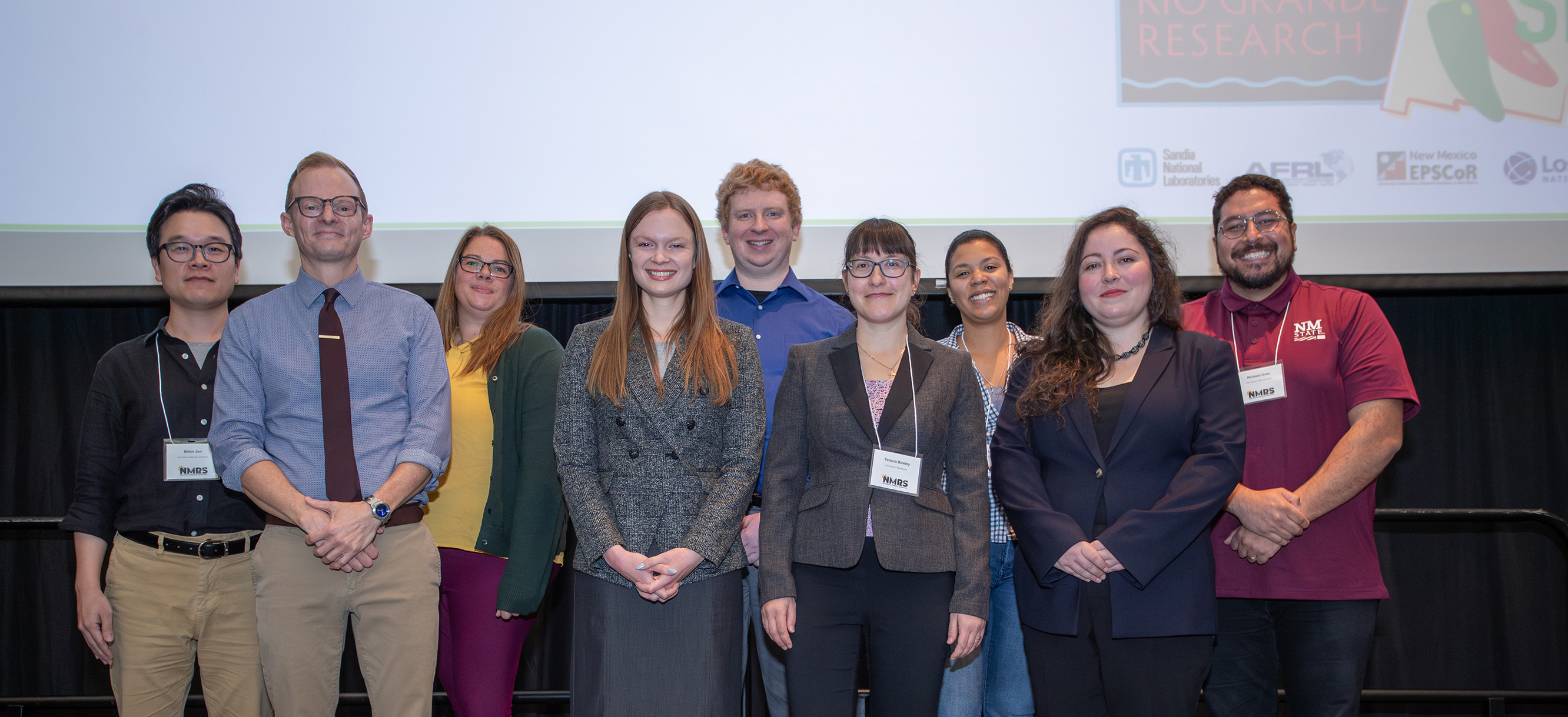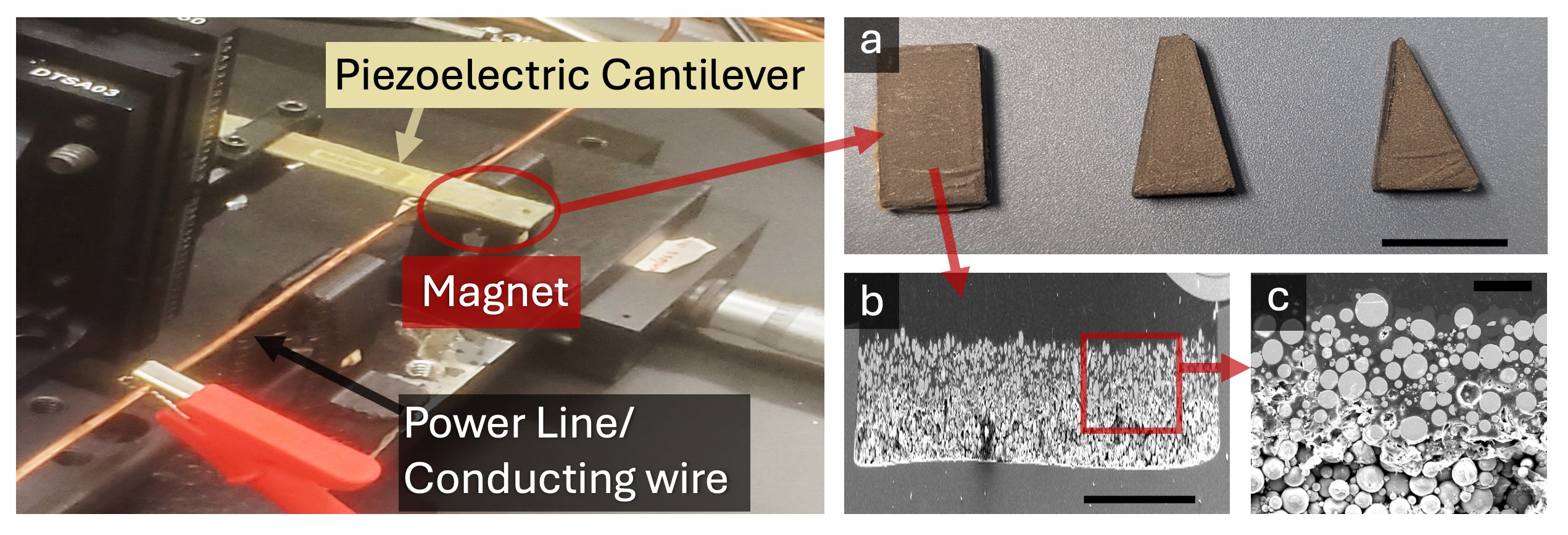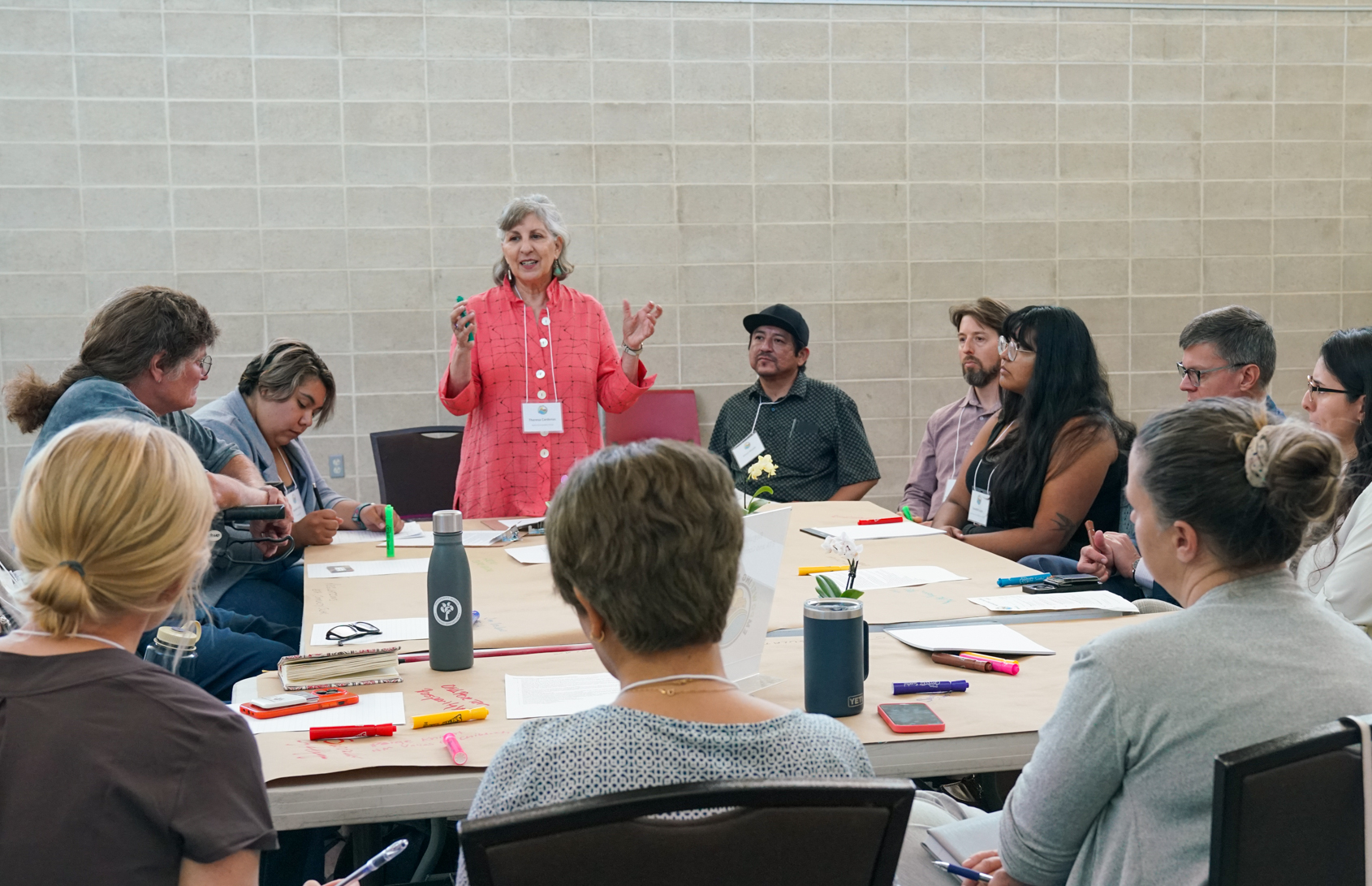NEWS
Research Highlights from NM SMART Grid Center

Researcher explaining her results during the poster session of the 2023 New Mexico Research Symposium
NM EPSCoR
The NM SMART Grid Center continues to showcase its innovative prowess. During our 6th project year, we reported three significant achievements to NSF which underscored the Center's commitment to advancing energy technology and fostering community engagement. Read our short (250 words or less) summary of each....
Postdoc Research SLAM Strengthens Ties Between NM EPSCoR, New Mexico Students, and National Laboratories
The second annual Rio Grande Research SLAM, part of the New Mexico Research Symposium (NMRS) on November 4th, 2023, featured postdoctoral researchers from NM EPSCoR, Sandia National Laboratories (SNL), and Los Alamos National Laboratory (LANL) competing to clearly present their research to a public audience in three minutes with one static slide.

What is the impact?
The Rio Grande Research SLAM allows postdocs to hone their communication skills while simultaneously providing a space for collaborative relationships to form between researchers from academic institutions and national labs in New Mexico.
Why is this significant?
2023 marked the 10th anniversary of NMRS organized by NM EPSCoR. In that time, the event has grown from a novel collaboration between the New Mexico Academy of Science and three NSF-funded programs (NM EPSCoR, NM Alliance for Minority Participation, and UNM’s CREST Center for Water and the Environment) to an annual gathering that convenes members from all sectors of New Mexico's research ecosystem. At NMRS, outstanding K-12 science teachers meet top researchers from New Mexico universities, student and faculty researchers share their work with national lab scientists, and national lab scientists practice presenting their research to non-expert audiences. The central New Mexico chapter of the American Chemical Society provides chemistry-themed door prizes, and the New Mexico Academy of Science recruits prominent New Mexico scientists to give a keynote address. The National Center for Genomic Resources, Center for Water and Environment at UNM, New Mexico NASA EPSCoR, Center for High Technology Materials at UNM, and New Mexico INBRE organize thematic oral sessions, and Los Alamos National Lab and Sandia National Laboratories provide an event emcee and judges for the student poster competition.
The recent integration of the Rio Grande Research SLAM into NMRS underscores the vital role of sustained collaborations and relationship-building in fostering robust research ecosystems, particularly in EPSCoR states like New Mexico.
Monitoring Our Future Electrical Grid
Professor Nathan Jackson and his team at the University of New Mexico have developed a self-powering current sensor that can be integrated into a wireless sensor network for smart grids.

What is the impact?
On average, Americans experienced nearly six hours of electricity interruptions in 2022. In the past 10 years, many electric utilities have installed sensors to better detect transmission interruptions and outages, but these sensors often require power to transmit system data in real-time. Professor Nathan Jackson and his team at the University of New Mexico have designed a current sensor capable of transmitting system data in real-time without external power.
Why is this significant?
Electricity makes modern America possible. Without it, food spoils, traffic lights go dark, and the internet is inaccessible. Modern current sensors continuously monitor the health of the electricity grid, allowing utilities to identify problems faster, leading to fewer outages and quicker repairs. The data from these sensors also helps utilities pinpoint areas of wasted energy, allowing them to invest in improvements that mean lower costs and a more reliable grid for everyone.
An Equity-Centered Energy Transition in New Mexico
In August 2023, the New Mexico SMART Grid Center convened New Mexico's first Energy Equity Town Hall at the Hispanic Cultural Center in Albuquerque. The event resulted in a set of transformative recommendations to guide New Mexico towards a more just energy future.

What is the impact?
The recommendations crafted via multiple community conversation events across the state and distilled in this town hall, ensure all communities, including those historically marginalized and exploited, have a seat at the decision-making table as New Mexico transitions from fossil fuels to renewable energy.
Why is this significant?
Traditionally, marginalized communities in New Mexico, often low-income and communities of color, have borne the brunt of environmental burdens from fossil fuel extraction. They've faced higher energy costs and poorer air quality despite contributing less to the problem.
An equitable energy transition breaks this cycle. By ensuring these communities have a voice in decision-making and access to clean energy benefits like job training and energy efficiency upgrades, it empowers them to become stakeholders, not victims, of the energy sector. This not only mitigates past injustices but also leverages the talents and perspectives of all New Mexicans to build a cleaner, more prosperous energy future.

